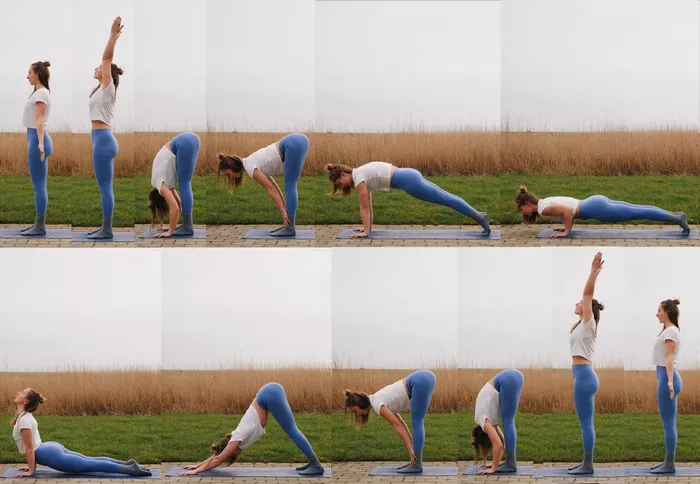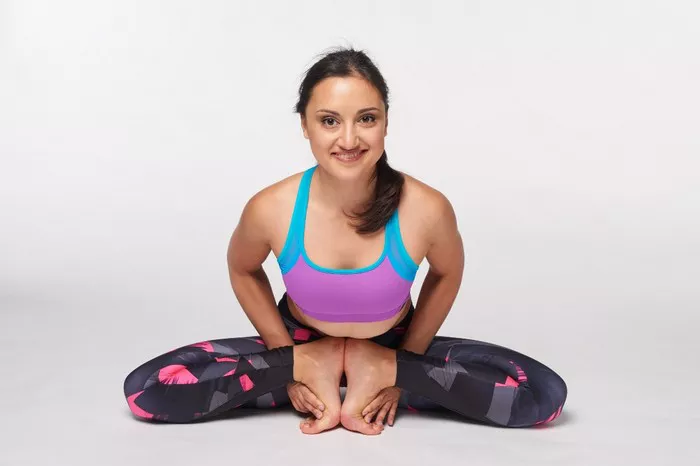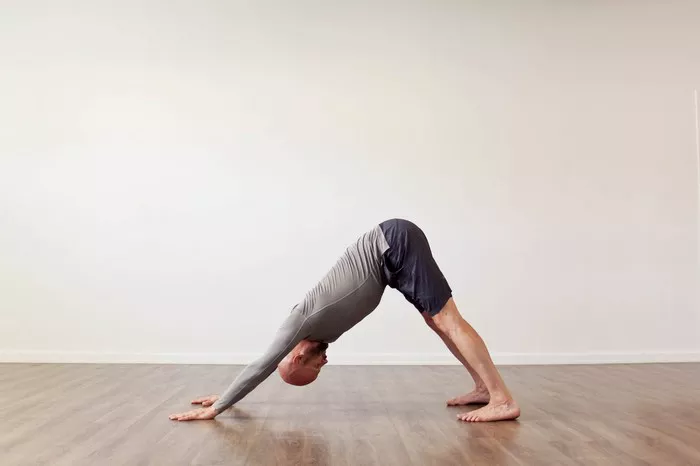Yoga is a practice that brings together physical postures, breathing exercises, and meditation to promote overall health and wellness. Traditionally, it has been seen as a practice primarily suited for those without physical limitations. However, this perception is changing. With the rise of adaptive yoga, which is specifically designed to meet the needs of people with disabilities, yoga has become more inclusive and accessible than ever before. In this article, we will explore how disabled people can benefit from yoga, how they can practice it, and the various adaptations and modifications that make it possible.
Understanding Yoga and its Benefits
Yoga is not just a physical practice; it is a holistic approach to health that encompasses the mind, body, and spirit. Through a combination of physical postures (asanas), breathing exercises (pranayama), and meditation (dhyana), yoga aims to bring balance and harmony to the practitioner’s life.
Some of the key benefits of yoga include:
Improved flexibility and strength: Regular practice of yoga helps improve flexibility, muscle tone, and strength.
Better posture and body awareness: Yoga encourages alignment and body awareness, which can help reduce the risk of injuries and improve posture.
Mental relaxation and stress relief: Through breathing techniques and mindfulness, yoga reduces stress, anxiety, and promotes mental clarity.
Increased mobility and joint health: Yoga can improve joint mobility, reduce stiffness, and provide relief from chronic pain.
Improved balance and coordination: Certain yoga poses help enhance balance and coordination, benefiting overall physical stability.
These benefits are not limited to healthy individuals; people with physical disabilities can also experience significant improvements in these areas with appropriate modifications.
The Power of Adaptive Yoga
Adaptive yoga is a style of yoga tailored to meet the needs of individuals with varying abilities. It modifies traditional yoga poses and sequences to accommodate the physical limitations of practitioners. This allows people with disabilities, whether due to mobility issues, neurological conditions, or other health challenges, to participate in the practice safely and effectively.
Types of Disabilities and How Yoga Can Help
There are various types of disabilities that might affect a person’s ability to practice traditional yoga. However, yoga can be adapted to meet the needs of individuals with different conditions. Here are some common categories of disabilities and how adaptive yoga can benefit them:
Physical Disabilities Physical disabilities can result from spinal cord injuries, amputations, cerebral palsy, muscular dystrophy, or other conditions that affect mobility. Adaptive yoga allows individuals with these disabilities to experience yoga in a way that suits their physical capabilities.
For individuals with mobility impairments: Yoga poses can be modified to be done while seated in a chair, using props like blocks, straps, and bolsters for support.
For amputees: Modified poses can ensure that the individual’s body is properly aligned, and props can be used to assist in balancing or stretching.
For people with spinal cord injuries: Poses can be adapted to focus on upper body strength, flexibility, and breathing exercises, which can help manage pain and improve overall health.
Neurological Disabilities Neurological conditions such as multiple sclerosis (MS), Parkinson’s disease, or stroke can affect motor control, balance, and coordination. Yoga offers a therapeutic approach to help manage symptoms and enhance mobility.
For people with Parkinson’s disease: Yoga can improve motor skills and help with the balance and coordination challenges that are common with the disease. Modified poses and slow, controlled movements are key.
For people with multiple sclerosis: Yoga can help with muscle stiffness, spasticity, and fatigue. Restorative poses and breathing exercises are beneficial for relaxing the muscles and reducing tension.
Chronic Pain and Arthritis Conditions like arthritis, fibromyalgia, and chronic pain syndromes can limit physical activity. Yoga can provide relief by promoting gentle movement, improving joint mobility, and reducing stress.
For people with arthritis: Restorative yoga and gentle stretching help reduce joint inflammation, stiffness, and pain.
For those with fibromyalgia: Gentle, restorative yoga can help reduce muscle tension and improve sleep quality, which are common issues for people with fibromyalgia.
Vision or Hearing Impairments Adaptive yoga is inclusive of people with sensory disabilities, such as blindness or hearing loss. Instructors can offer verbal cues and hands-on adjustments to guide participants through their practice.
For individuals with visual impairments: Instructors can provide clear, detailed verbal instructions. Tactile adjustments can also be used to guide the practitioner into proper alignment.
For individuals with hearing impairments: Yoga instructors can communicate with sign language or use written instructions, and also incorporate tactile cues to provide adjustments.
Intellectual or Developmental Disabilities Individuals with intellectual disabilities may benefit from yoga’s emphasis on body awareness, mindfulness, and relaxation. Adaptive yoga can help with improving motor skills, coordination, and emotional regulation.
For people with autism spectrum disorder (ASD): Yoga can assist in improving social skills, focus, and sensory integration. It can also help with emotional regulation and calming.
For people with Down syndrome or other developmental disabilities: Yoga can support balance, strength, and coordination, and can also help with improving posture and body awareness.
How to Practice Yoga as a Disabled Person
While yoga can be adapted to suit a wide range of disabilities, it is important for individuals to approach the practice with patience, self-awareness, and guidance from a qualified instructor. Here are some tips on how to get started with yoga if you have a disability:
Consult a Doctor or Health Professional Before starting yoga, it’s important to consult with your doctor or healthcare provider, especially if you have a medical condition or are recovering from an injury. Your doctor can help guide you on what types of movements or poses may be beneficial or unsafe.
Find an Experienced Adaptive Yoga Instructor Look for a yoga instructor who is experienced in adaptive yoga. They should be knowledgeable about different disabilities and how to safely modify poses to accommodate individual needs. Many instructors have specialized certifications in adaptive yoga or therapeutic yoga.
Use Props for Support Props such as blocks, straps, bolsters, blankets, and chairs can make yoga poses more accessible. For example, a person in a wheelchair may practice chair yoga with a sturdy chair to support them in various poses. Props allow individuals to modify the intensity and range of motion while maintaining proper alignment.
Start Slowly As with any new physical activity, it’s important to start slowly and listen to your body. Begin with simple, gentle poses and gradually progress as your body becomes stronger and more flexible. It’s essential not to push yourself too hard or too fast.
Focus on Breath and Mindfulness Breathing techniques are a cornerstone of yoga practice. Learning how to focus on the breath can help calm the nervous system, reduce stress, and improve mental clarity. For individuals with physical limitations, breathwork can be a central aspect of the practice.
Adapt Your Practice Some individuals may find that certain yoga poses are difficult or uncomfortable due to their physical limitations. In such cases, adaptations can be made. For example, a standing pose may be performed sitting in a chair, or a pose requiring the legs to be bent may be done with a modified position to reduce strain on the body.
The Emotional and Psychological Benefits of Yoga for Disabled People
Yoga is not just about physical fitness—it also offers psychological and emotional benefits that can be particularly helpful for people with disabilities. Many individuals with disabilities experience challenges related to self-esteem, anxiety, and depression. Yoga can help address these issues by fostering mindfulness, self-acceptance, and emotional well-being.
Improved Body Image: Yoga encourages body positivity and self-compassion. It helps individuals reconnect with their bodies in a non-judgmental way, cultivating acceptance of one’s physical self.
Stress Relief and Emotional Balance: Through mindfulness and meditation, yoga helps regulate the nervous system, reduce stress, and calm the mind. This can be especially beneficial for those dealing with the emotional toll of living with a disability.
Empowerment and Confidence: Yoga can help individuals with disabilities feel empowered by showing them that they can practice and achieve something that improves their health and well-being. The sense of accomplishment in mastering a pose or sequence can boost self-confidence.
Conclusion
Yoga is a transformative practice that is accessible to people of all abilities, including those with disabilities. Through adaptive yoga, individuals with mobility, neurological, sensory, or intellectual disabilities can experience the many physical, mental, and emotional benefits of yoga. With the right modifications and guidance from trained instructors, yoga can enhance mobility, flexibility, strength, and overall well-being, while also fostering a sense of empowerment and self-acceptance.
If you are someone with a disability and have been considering starting yoga, don’t hesitate to give it a try. Yoga is for everyone, and with the right approach, it can be a rewarding and life-changing practice that promotes greater health and happiness.
Related Topics:

















